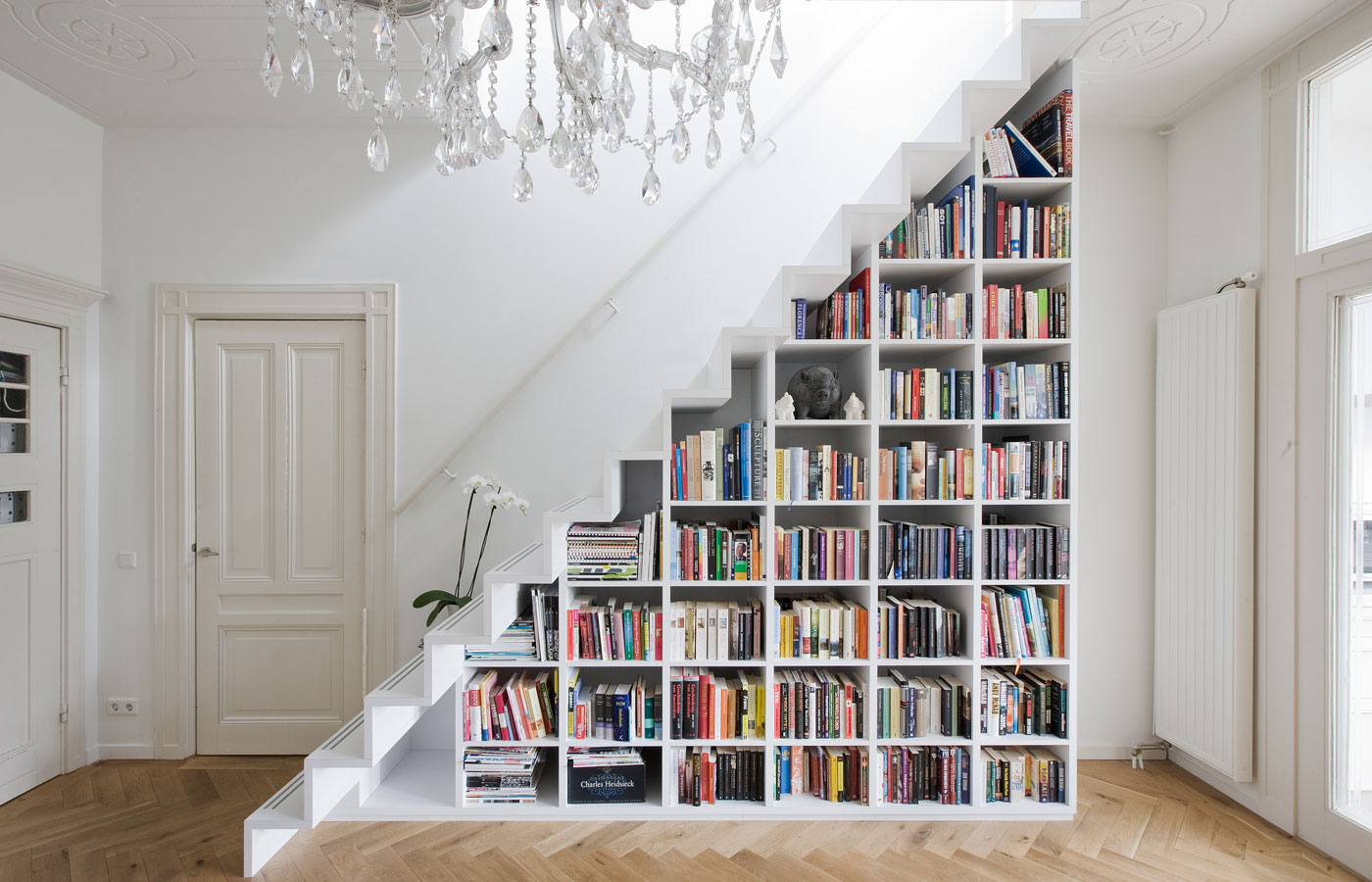

Articles
How To Store Books Without Clutter
Modified: August 27, 2024
Learn how to store books without clutter with these helpful articles. Find tips and tricks for organizing your book collection and maximizing space in your home.
(Many of the links in this article redirect to a specific reviewed product. Your purchase of these products through affiliate links helps to generate commission for Storables.com, at no extra cost. Learn more)
Introduction
Books are not just a source of knowledge and entertainment; they can also be a beautiful and cherished part of our home decor. However, without proper organization, they can quickly turn into clutter, making it difficult to find the book you want when you need it. In this article, we will explore various strategies for storing books without clutter, allowing you to maintain a neat and organized space while still showcasing your love for literature.
Organizing your books can feel overwhelming, especially if you have a large collection. The key is to find a system that works for you and your space. Whether you prefer organizing by category, color, or even creating a cozy reading nook, there are plenty of options to suit your style and preferences. Let’s dive in and discover how to keep your books tidy and easily accessible.
Key Takeaways:
- Embrace creativity and personal style to organize books by category, color, or in cozy reading nooks, creating a visually appealing and functional home library that reflects your love for literature.
- Utilize vertical space, decorative baskets, and floating shelves to store books without clutter, infusing your space with practicality, style, and a touch of charm.
Read more: How To Store Books Without A Bookshelf
Organizing By Category
One of the most common ways to organize books is by category. This method is practical and efficient, allowing you to quickly locate a book based on its genre or subject matter. Start by sorting your books into broad categories, such as fiction, non-fiction, biographies, self-help, or cookbooks. Then, within each category, you can further organize them by subcategories such as mystery, romance, history, or travel.
To implement this system, you can allocate specific shelves or sections of a bookcase for each category. Use labels or dividers to clearly mark each section, making it easy to identify where each book belongs. Within each section, arrange the books either alphabetically by author or in a way that makes the most sense to you.
If you have a diverse collection with a large number of books, consider using additional categories to further refine your organization. For example, within the fiction category, you can separate books by classic literature, contemporary fiction, or science fiction.
Organizing your books by category not only makes it easier to find specific books but also allows you to create visually appealing sections on your bookshelves. By grouping similar books together, you create a cohesive and organized look.
Allocating Shelf Space
Once you have decided on the categories for your books, the next step is to allocate shelf space accordingly. This is particularly important if you have limited space or a large collection of books.
Start by assessing how much space you have available for your books. Measure your shelves and take into consideration any other items that may share the space, such as decorative objects or picture frames. This will help you determine how many shelves you can allocate to your book collection.
Divide your book collection evenly across the available shelves, keeping in mind any specific requirements you may have. For example, larger or oversized books may require a separate shelf or an adjustable bookcase to accommodate their size.
When allocating shelf space, consider the height of your books. Try to group books of similar height together to create a visually pleasing arrangement. Use bookends, if needed, to prevent books from tipping over or leaning.
It’s also important to leave some empty space on each shelf. This not only makes it easier to dust and clean the shelves but also allows room for growth if you plan on expanding your book collection in the future. Use this space to display decorative items or add empty bookends for a polished look.
Remember, the goal is to have a balanced and visually appealing arrangement on your shelves. Take the time to arrange and rearrange your books until you find an arrangement that not only looks good but also makes it easy to locate and access your books.
Utilizing Vertical Space
When it comes to storing books without clutter, it’s important to make the most of every inch of available space. Utilizing vertical space is a smart strategy to maximize storage capacity and create an organized look.
Start by considering tall bookcases or wall-mounted shelving units that can make use of the vertical space in your room. These types of shelves provide ample space for your books while leaving the floor free for other furniture or storage items.
Organize your books on the shelves in a way that utilizes the available vertical space efficiently. Place taller books or book series on the higher shelves, while smaller paperbacks or magazines can be placed on lower shelves. This not only creates a visually pleasing arrangement but also makes it easier to access your books without straining or reaching too high.
To make the most of the vertical space, consider adding adjustable shelving units that allow you to customize the distance between shelves. This way, you can easily accommodate books of different sizes without wasting any space.
If you have high ceilings, you can also consider adding a ladder or step stool to reach the top shelves. This not only adds a touch of elegance to your space but also makes it more practical to access the books stored on higher shelves.
Another way to utilize vertical space effectively is by installing floating shelves. These shelves can be mounted on the wall at various heights, providing additional storage while keeping the floor space clean and clutter-free. Floating shelves can be arranged in a linear pattern or creatively staggered to add visual interest to your walls.
By utilizing vertical space, you not only create a more functional and organized storage solution but also make a design statement by utilizing the height of your room. So, don”t forget to think vertically when it comes to storing your books.
Using Bookends or Book Shelves
Bookends and bookshelves are essential tools for keeping your books organized and preventing them from toppling over. They not only provide stability but also add a decorative element to your book displays.
Bookends come in a variety of styles and materials, allowing you to choose options that complement your personal aesthetic. They can be traditional and functional, such as metal or wooden bookends that hold books in place, or they can be more decorative, featuring intricate designs or sculptural elements.
Place bookends at the ends of your bookshelves or use them to separate different sections or categories of books. They not only keep your books neatly in place but also provide a visual break in the arrangement, making it easier to locate specific books.
Another option for organizing your books is to use bookshelves that come with built-in bookends. These types of bookshelves have a vertical panel on one end, typically made of the same material as the shelves, that serves as a bookend. This eliminates the need for separate bookends and provides a streamlined and cohesive look.
Bookshelves themselves are also crucial in keeping your books organized and easily accessible. Choose bookshelves that are sturdy and have adjustable shelves to accommodate books of various sizes. Opt for shelves that are wide enough to accommodate your books without cramming them together too tightly, as this can cause damage to the book covers or spine.
Consider the height and width of your bookshelves when selecting them, ensuring they fit comfortably in the designated space and provide sufficient storage capacity. If you have a growing book collection, choose bookshelves with extra space for future additions.
Remember to arrange your books on the bookshelves in a visually pleasing manner, grouping similar categories or genres together. Use bookends or the built-in bookend panels to divide sections and create an organized and structured look.
Whether you opt for decorative bookends or bookshelves with built-in bookends, they are both practical and stylish solutions for keeping your books organized and adding a touch of charm to your space.
Consider using bookshelves or storage bins to keep books organized and out of the way. Sort books by genre or author to make them easy to find. Keep only the books you love and donate or sell the rest.
Read more: How To Display Collections Without Clutter
Organizing by Color
If you’re looking to add a visual pop to your bookshelf while keeping your collection organized, organizing your books by color can be an excellent option. This method not only creates a cohesive and aesthetically pleasing display but also makes it easier to locate specific books based on their cover color.
To start organizing your books by color, first, take an inventory of your collection and categorize them into color groups such as red, blue, green, yellow, etc. If you have a large collection, you can further break down each color group into shades or tones.
Once you have sorted your books by color, arrange them on the shelf in a gradient or rainbow-like pattern. Begin with one color group and gradually transition to the next. You can choose to arrange them in a linear fashion or create an abstract pattern for a more artistic touch.
Keep in mind that organizing your books by color may not be the most practical method if you frequently need to access specific books based on their content. However, if you primarily want to create an eye-catching display and are comfortable with browsing for books visually, the color organization method can be a striking choice.
To enhance the visual impact, consider incorporating decorative objects, picture frames, or potted plants on the bookshelf in complementary colors. This will create a cohesive and visually appealing arrangement.
It’s important to note that organizing by color works best if you have a diverse collection of books with a wide range of colors. If your collection is predominantly neutral or monochromatic, you may not achieve the same visual impact. In such cases, you can consider incorporating book covers or dust jackets in bold or vibrant colors to add more variety to the arrangement.
Organizing books by color is a fun and unique way to showcase your collection while creating an eye-catching display. However, it’s important to strike a balance between aesthetics and practicality, considering your personal needs and preferences.
Storing Books in Decorative Baskets or Boxes
If you’re looking for an alternative way to store your books while adding a touch of style to your space, consider using decorative baskets or boxes. This method not only keeps your books organized but also adds a decorative element to your home decor.
Using baskets or boxes to store books is particularly useful if you have limited shelf space or want to create a more casual and cozy atmosphere. You can find a variety of sizes, shapes, and materials to suit your style and home decor aesthetic.
Begin by sorting your books into categories or genres. Then, select baskets or boxes that can accommodate the size and number of books in each category. For example, larger baskets or boxes can hold coffee table books or art books, while smaller ones can store paperbacks or novels.
Once you have chosen the appropriate baskets or boxes, arrange them on shelves, side tables, or even on the floor. Place books inside the baskets or boxes, ensuring they are neatly stacked and organized by category. You can use dividers or labels to help you identify the different sections within each container.
Decorative baskets or boxes not only provide a practical storage solution but also add texture and visual interest to your space. Choose baskets or boxes that complement your existing decor and reflect your personal style. Woven baskets add a rustic or bohemian touch, while sleek and modern boxes can seamlessly blend into contemporary spaces.
In addition to their aesthetic appeal, using baskets or boxes to store books also offers the advantage of easy accessibility. You can easily grab the entire container and move it to another area when needed, making it convenient for rearranging or transporting your books.
Furthermore, storing books in baskets or boxes can be a great option for children’s rooms or play areas. You can choose colorful and playful containers that add a fun and whimsical element to the space.
Overall, storing books in decorative baskets or boxes is a practical and stylish solution for organizing your collection while adding a decorative touch to your home. It allows you to declutter your shelves and create a more visually appealing and personalized display.
Displaying Books on Floating Shelves
Floating shelves are a sleek and modern storage solution that can enhance the visual appeal of your space while showcasing your favorite books. They create the illusion of books floating on the wall, giving a minimalist and sophisticated look to your home decor.
When it comes to displaying books on floating shelves, there are several approaches you can take. One option is to arrange your books horizontally, resting them with the cover facing out or spine facing out. This creates a clean and streamlined look, allowing the colorful spines or artistic book covers to become the focal point.
An alternative approach is to display books vertically, stacking them one on top of the other. This method works particularly well if you have limited space or want to create a more organized and structured look. To add visual interest, you can vary the heights of the book stacks or create alternating patterns with books of different colors or sizes.
Another creative way to display books on floating shelves is by incorporating decorative bookends or objects. Place a set of stylish bookends on each end of the shelf to keep the books in place and add a touch of elegance. You can also include small decorative objects, such as plants, picture frames, or sculptures, interspersed among the books to create visual variety and break up the arrangement.
Consider arranging your books on floating shelves in a way that tells a story or reflects your personal interests. For example, you can group books by a specific author, genre, or theme. This not only adds a visually appealing element to your space but also makes it easier for you to locate the books you want to read.
When installing floating shelves, ensure they are securely mounted to the wall, following the manufacturer’s instructions. Proper installation is crucial to ensure the shelves can support the weight of the books and other decorative items.
Whether you choose to display your books horizontally or vertically, use bookends or incorporate decorative objects, floating shelves offer a versatile and stylish way to showcase your book collection. They allow you to transform your walls into a functional and visually pleasing part of your home.
Creating a Reading Nook
If you’re a book lover, having a cozy reading nook is a dream come true. It’s a space where you can escape into the pages of your favorite books and immerse yourself in a world of imagination. Creating a dedicated reading nook not only provides a comfortable spot to enjoy your books but also adds a charming and personal touch to your home.
Start by selecting the perfect location for your reading nook. Look for a quiet corner or an area with natural light, such as near a window or under a skylight. This will create a serene and inviting atmosphere for your reading sessions.
Next, choose comfortable seating options for your reading nook. Depending on your preference, you can opt for a plush armchair, a cozy bean bag chair, or even a window seat with soft cushions. Make sure the seating is ergonomic and supports your posture for extended reading sessions.
Add a side table or a small bookshelf within reach of your seating area to store your current reads or a stack of books you plan to read. This will keep your books organized and easily accessible.
Incorporate proper lighting in your reading nook to enhance the reading experience. A floor lamp or a table lamp with warm, soft lighting will create a cozy ambiance. Natural light during the day can also contribute to a soothing and inviting environment.
To personalize your reading nook, add decorative touches like throw pillows, a cozy blanket, or a rug to create a warm and inviting space. Consider incorporating shelving or wall-mounted bookshelves to display your favorite books or create a mini library within your reading nook.
Make sure to create a peaceful and calm atmosphere in your reading nook. Consider using noise-cancelling curtains or adding a white noise machine to block out external sounds and distractions.
To complete your reading nook, create a sense of escapism by adding elements that evoke tranquility and relaxation. Surround yourself with plants, scented candles, or soothing artwork to enhance the atmosphere and make your reading experience even more enjoyable.
Whether it’s a dedicated corner in your living room, a cozy alcove in your bedroom, or a sunlit spot in your home office, creating a reading nook allows you to immerse yourself in the world of books and indulge in moments of relaxation and exploration.
Read more: How To Organize Books Without A Bookshelf
Conclusion
Organizing and storing books without clutter is not only practical but can also bring a sense of joy and aesthetics to your space. By implementing the strategies discussed in this article, such as organizing by category, utilizing vertical space, using bookends or bookshelves, organizing by color, storing books in decorative baskets or boxes, displaying books on floating shelves, and creating a cozy reading nook, you can create a visually appealing and functional home library.
Remember that the key to successful book organization is finding a system that works for you and suits your personal style. Whether you prefer a minimalist approach or a more eclectic and decorative one, the goal is to keep your books neat, accessible, and showcased in a way that reflects your personality.
As you embark on your journey to store books without clutter, don’t forget to infuse your creativity and personal touch. Have fun experimenting with different arrangements, incorporating decorative elements, and creating a space that inspires you to indulge in the pleasure of reading.
Lastly, while organization is important, don’t forget that books are meant to be enjoyed. Take the time to explore the stories and ideas within your collection, and let your love for literature shine through your beautifully organized and curated book space.
Happy reading and organizing!
Frequently Asked Questions about How To Store Books Without Clutter
Was this page helpful?
At Storables.com, we guarantee accurate and reliable information. Our content, validated by Expert Board Contributors, is crafted following stringent Editorial Policies. We're committed to providing you with well-researched, expert-backed insights for all your informational needs.
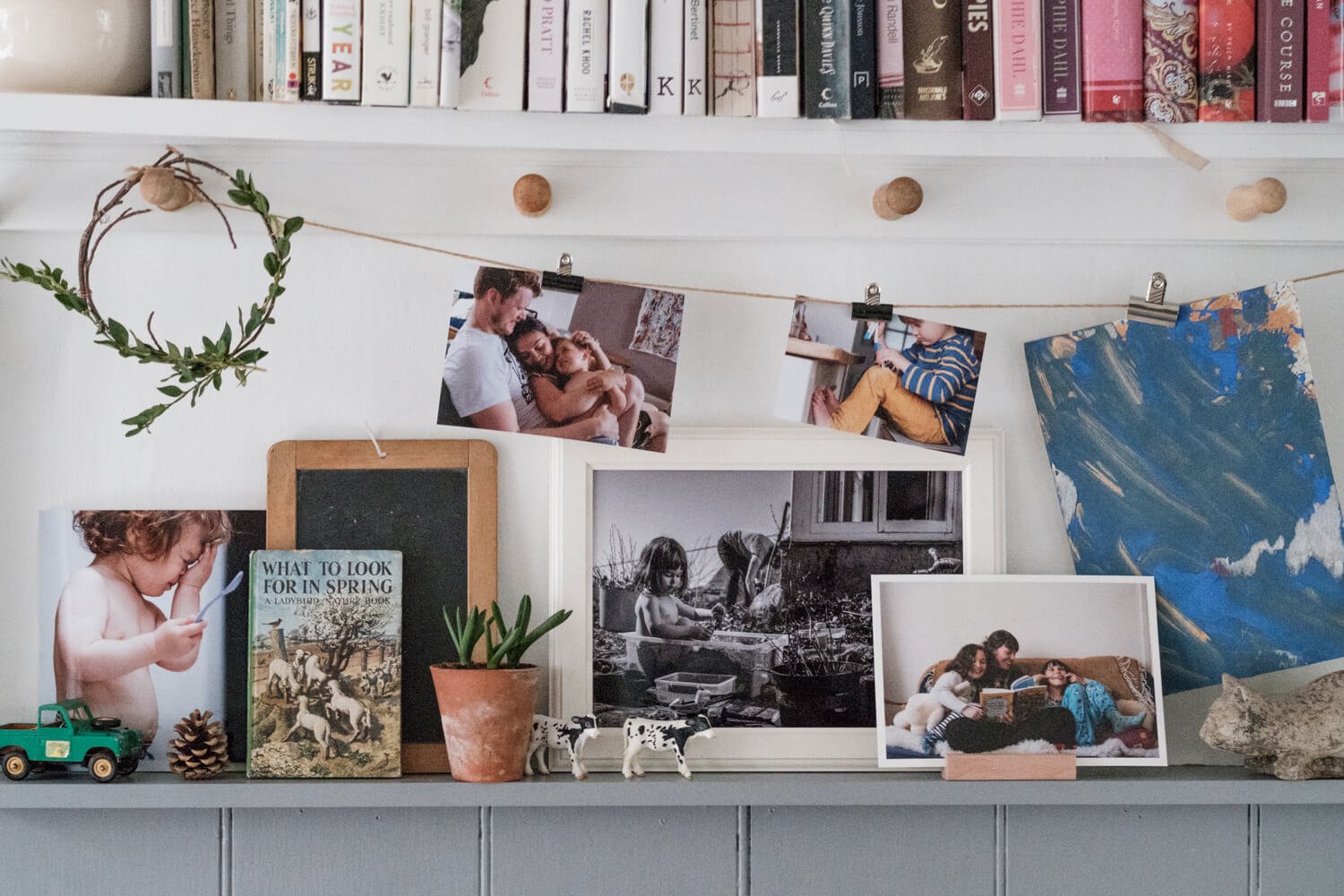
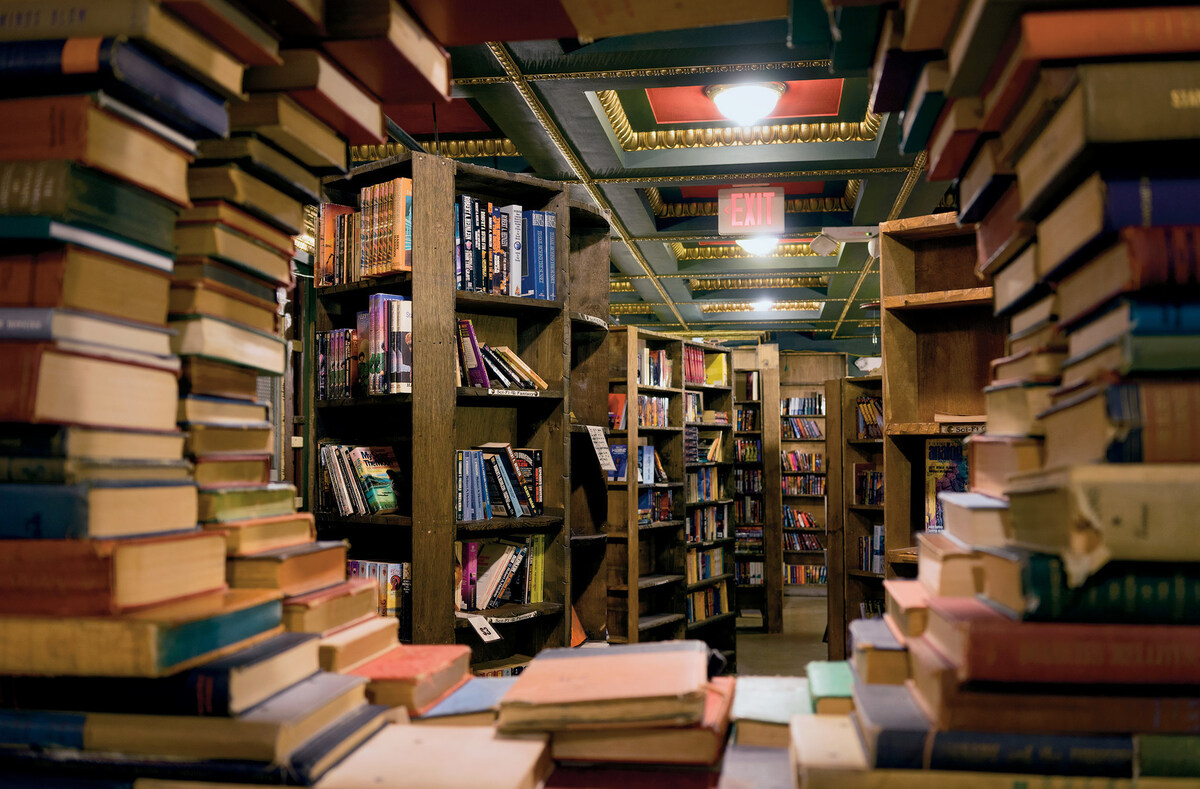
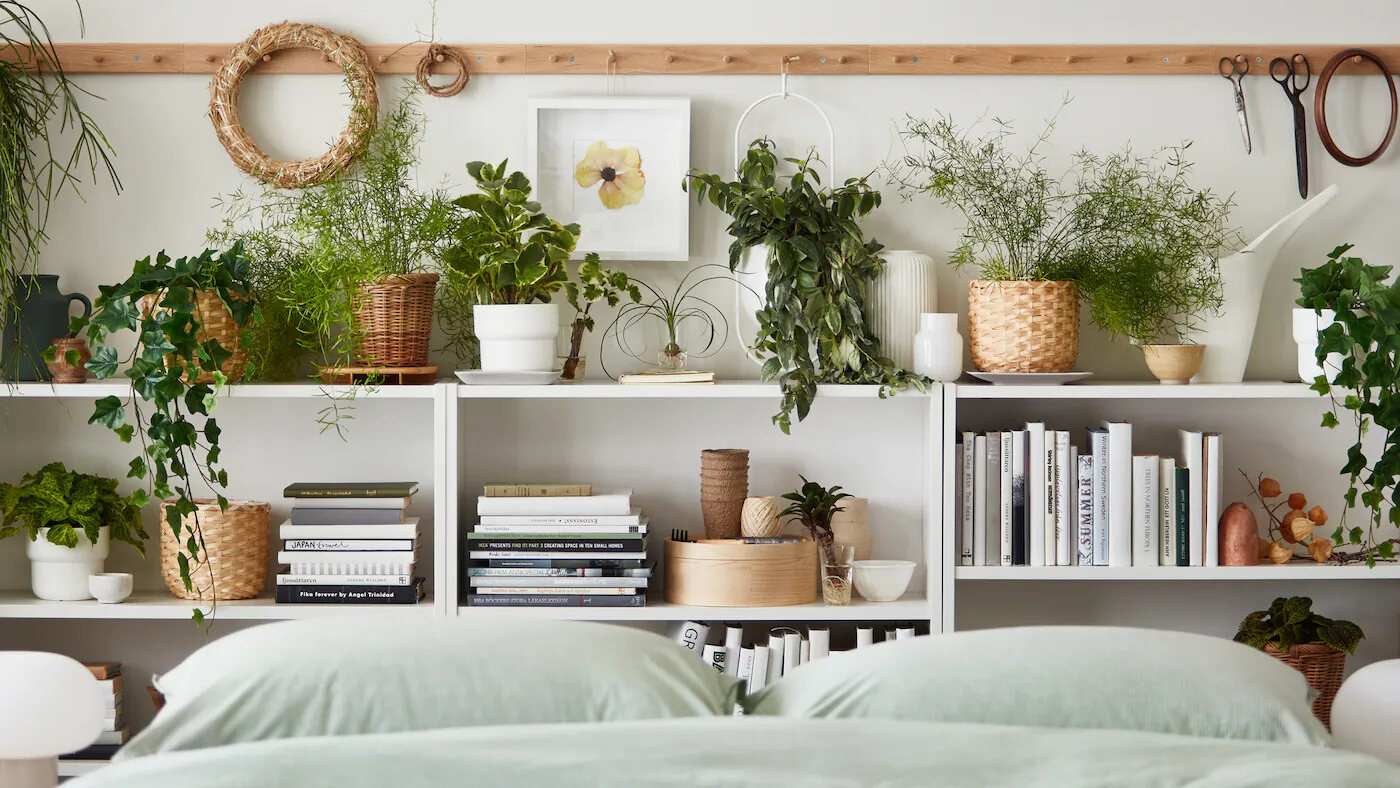
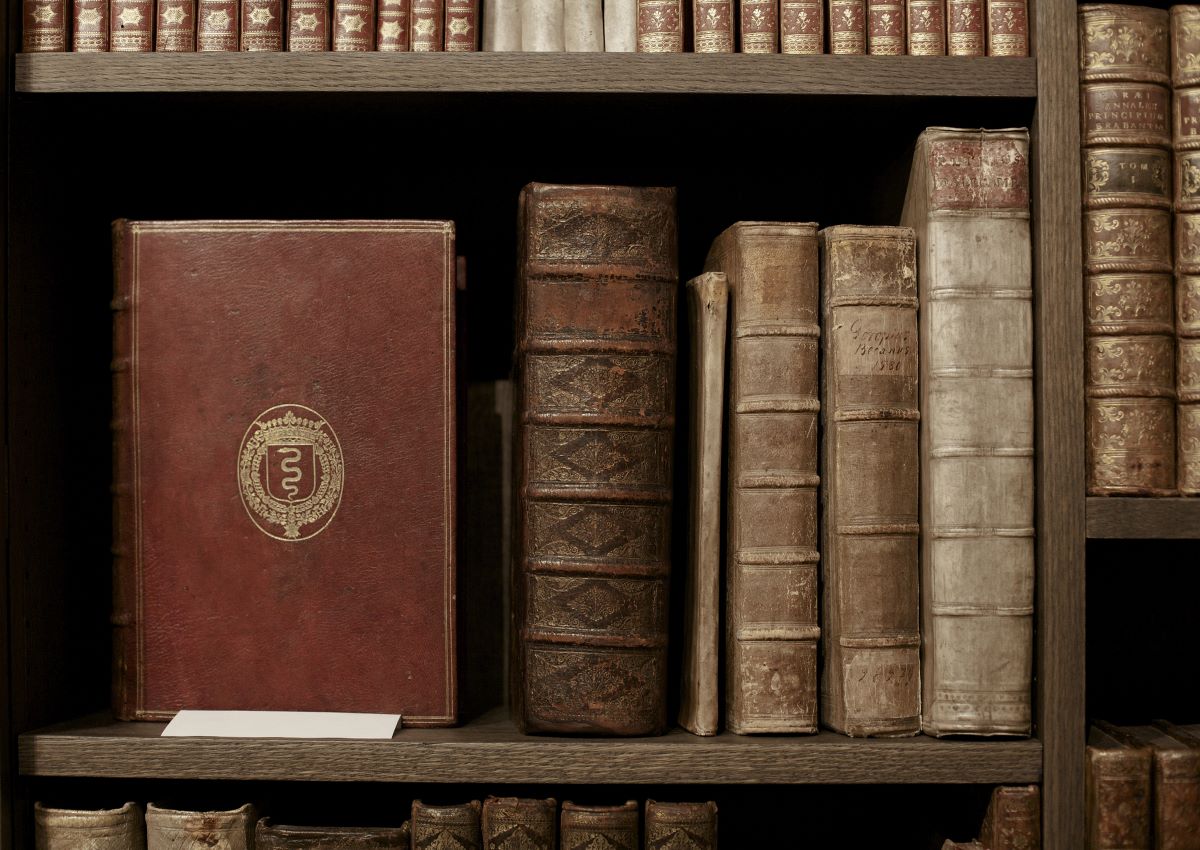

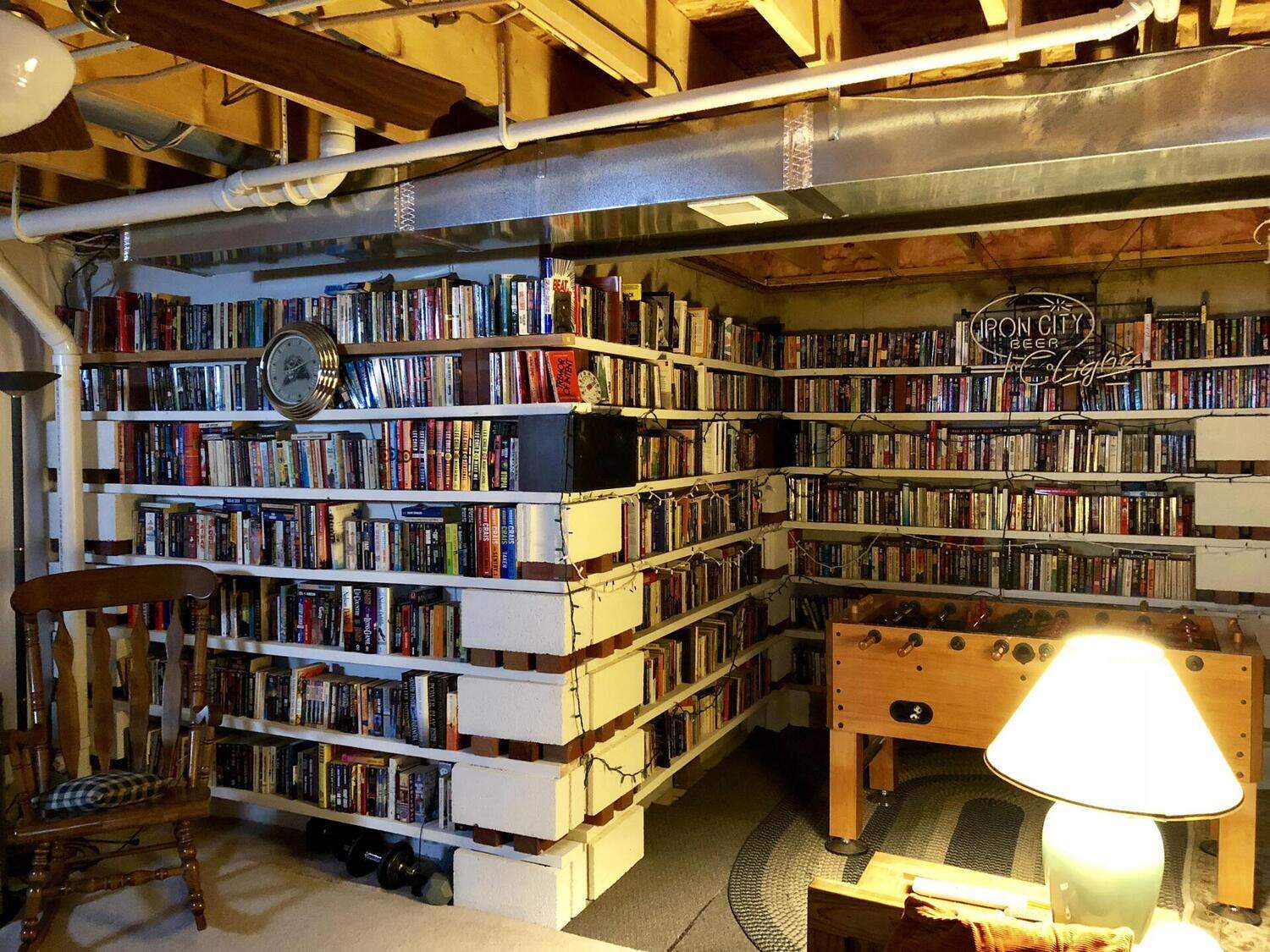
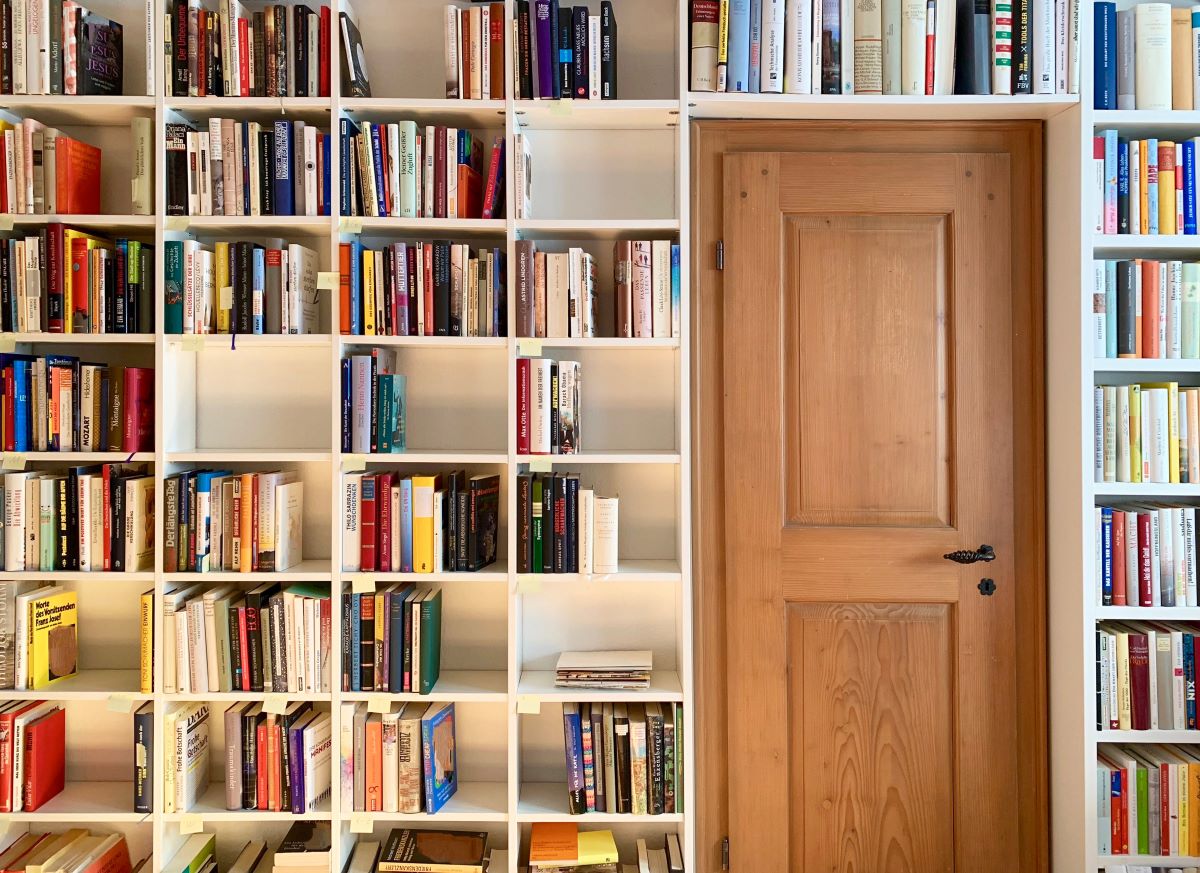
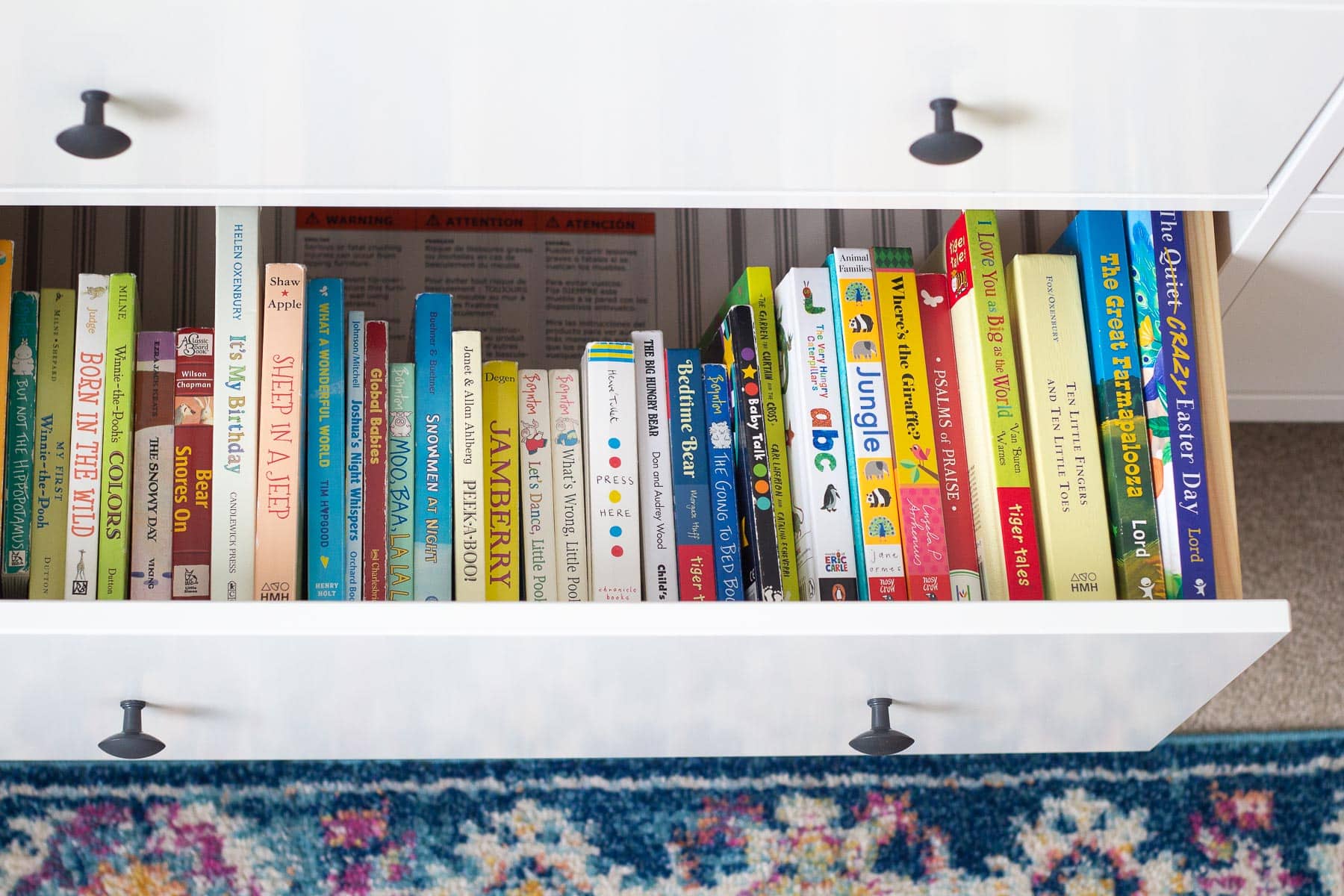




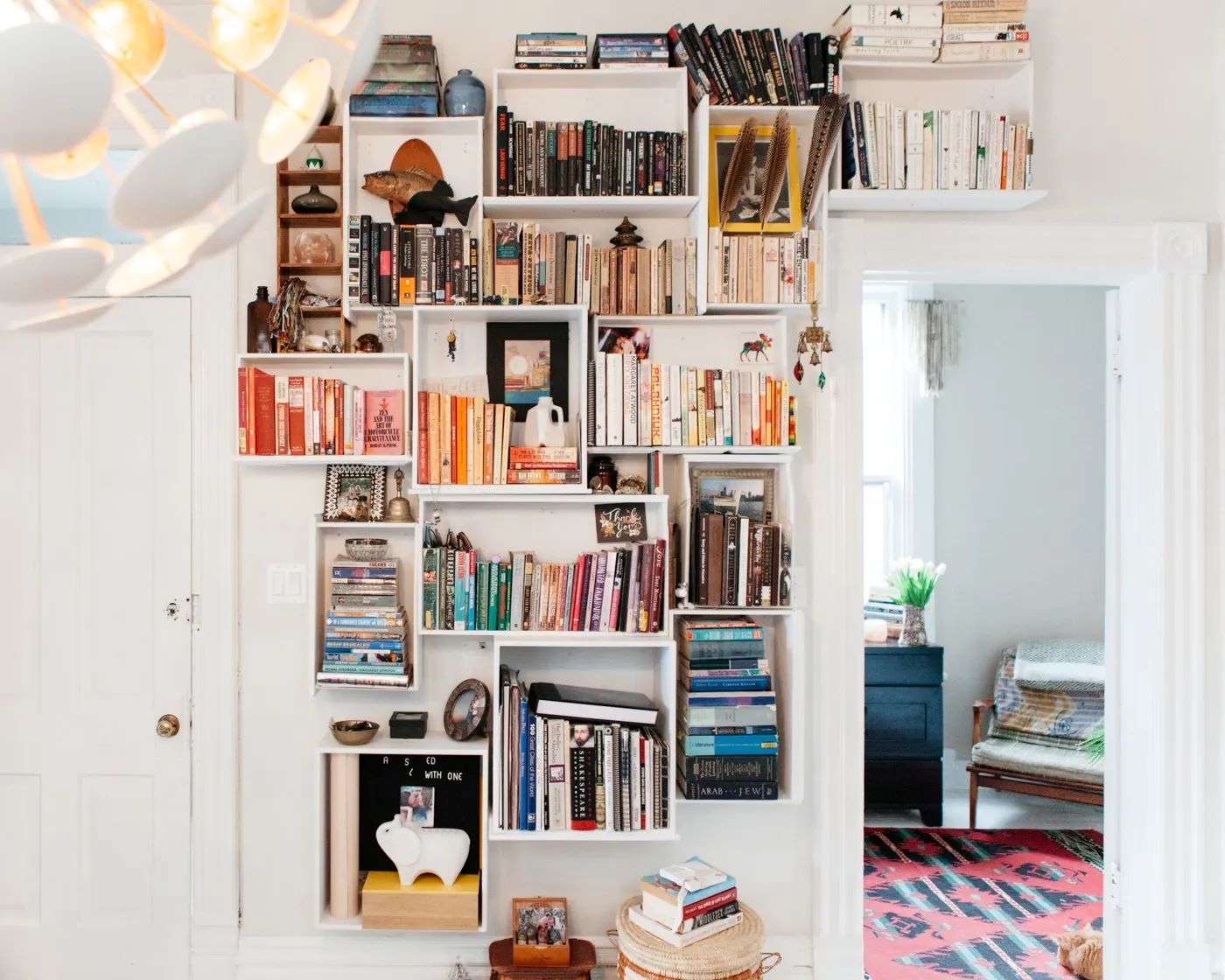

0 thoughts on “How To Store Books Without Clutter”